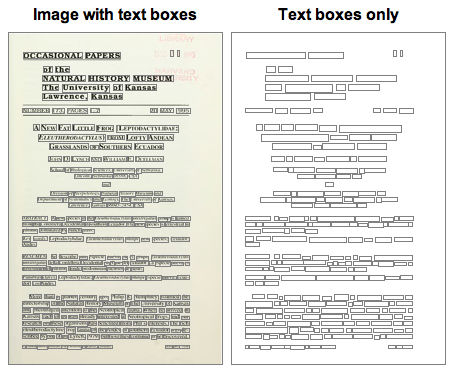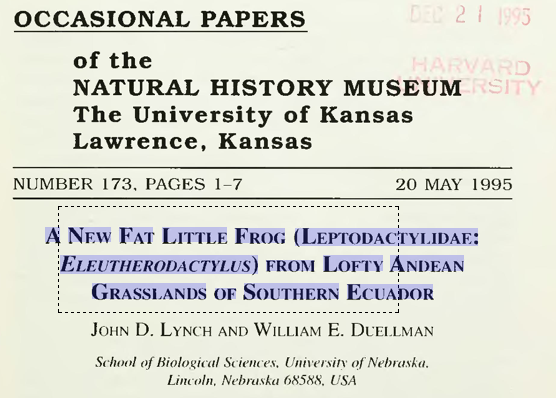In March I wrote a short post DjVu XML to HTML showing how to pull out and display the text boxes for a DjVu file. I've put this example, together with links to the XSLT file I use to do the transformation online at Display text boxes in a DjVu page. Here's an example, where each box (a DIV element) corresponds to a fragment of text extracted by OCR software.

The next step is to make this interactive. Inspired by Google's Javascript-based PDF viewer (see How does the Google Docs PDF viewer work?), I've revisited this problem. One thing the Google PDF viewer does nicely is enable you to select a block of text from a PDF page, in the same way that you can in a native PDF viewer such as Adobe Acrobat or Mac OS X Preview. It's quite a trick, because Google is displaying a bitmap image of the PDF page. So, can we do something similar for DjVu?
The thing I'd like to do is something what is shown below — drag a "rubber band" on the page and select all the text that falls within that rectangle:

This boils down to knowing for each text box whether it is inside or outside the selection rectangle:

Implementation
We could try and solve this by brute force, that is, query each text box on the page to see whether it overlaps with the selection or not, but we can make use of a data structure called an R-tree to speed things up. I stumbled across Jon-Carlos Rivera's R-Tree Library for Javascript, and so was inspired to try and implement DjVu text selection in a web browser using this technique.
The basic approach is as follows:
- Extract text boxes from DjVu XML file and lay these over the scanned page image.
- Add each text box to a R-tree index, together with the "id" attribute of the corresponding DIV on the web page, and the OCR text string from that text box.
- Track mouse events on the page, when the user clicks with the mouse we create a selection rectangle ("rubber band"), and as the mouse moves we query the R-tree to discover which text boxes have any portion of their extent within the selection rectangle.
- Text boxes in the selection have their background colour set to an semi-transparent shade of blue, so that the user can see the extent of the selected text. Boxes outside the selection are hidden.
- When the user releases the mouse we get the list of text boxes from the R-tree, and concatenate the text corresponding to each box, and finally display the resulting selection to the user.
Copying text
So far so good, but what can we do with the selected text? One obvious thing would be to copy and paste it (for example, we could select a species distribution and paste it into a text editor). Since all we've done is highlight some DIVs on a web page, how can we get the browser to realise that it has some text it can copy to the clipboard? After browsing Stack Overflow I came across this question, which gives us some clues. It's a bit of a hack, but behind the page image I've hidden a TEXTAREA element, and when the user has selected some text I populate the TEXTAREA with the corresponding text, then set the browser's selection range to that text. As a consequence, the browser's Copy command (⌘C on a Mac) will copy the text to the clipboard.
Demo
You can view the demo here. It only works in Safari and Chrome, I've not had a chance to address cross-browser compatibility. It also works in the iPad, which seems a natural device to support interactive editing and annotation of BHL text, but you need to click on the button On iPad click here to select text before selecting text. This is an ugly hack, so I need to give a bit more thought to how to support the iPad touch screen, while still enabling users to pan and zoom the page image.
Next steps
This is all very crude, but I think it shows what can be done. There are some obvious next steps:
- Enable selected text to be edited so that we can correct the underlying OCR text.
- Add tools that operate on the selected text, such as check whether it is a taxonomic name, or if it is a bibliographic citation we could attempt to parse it and locate it online (such as David Shorthouse's reference parser).
- Select parts of the page image itself, so that we could extract a figure or map.
- Add "post it note" style annotations.
- Add services that store the edits and annotations, and display annotations made by others.
Lots to do. I foresee a lot of Javascript hacking over the coming weeks.